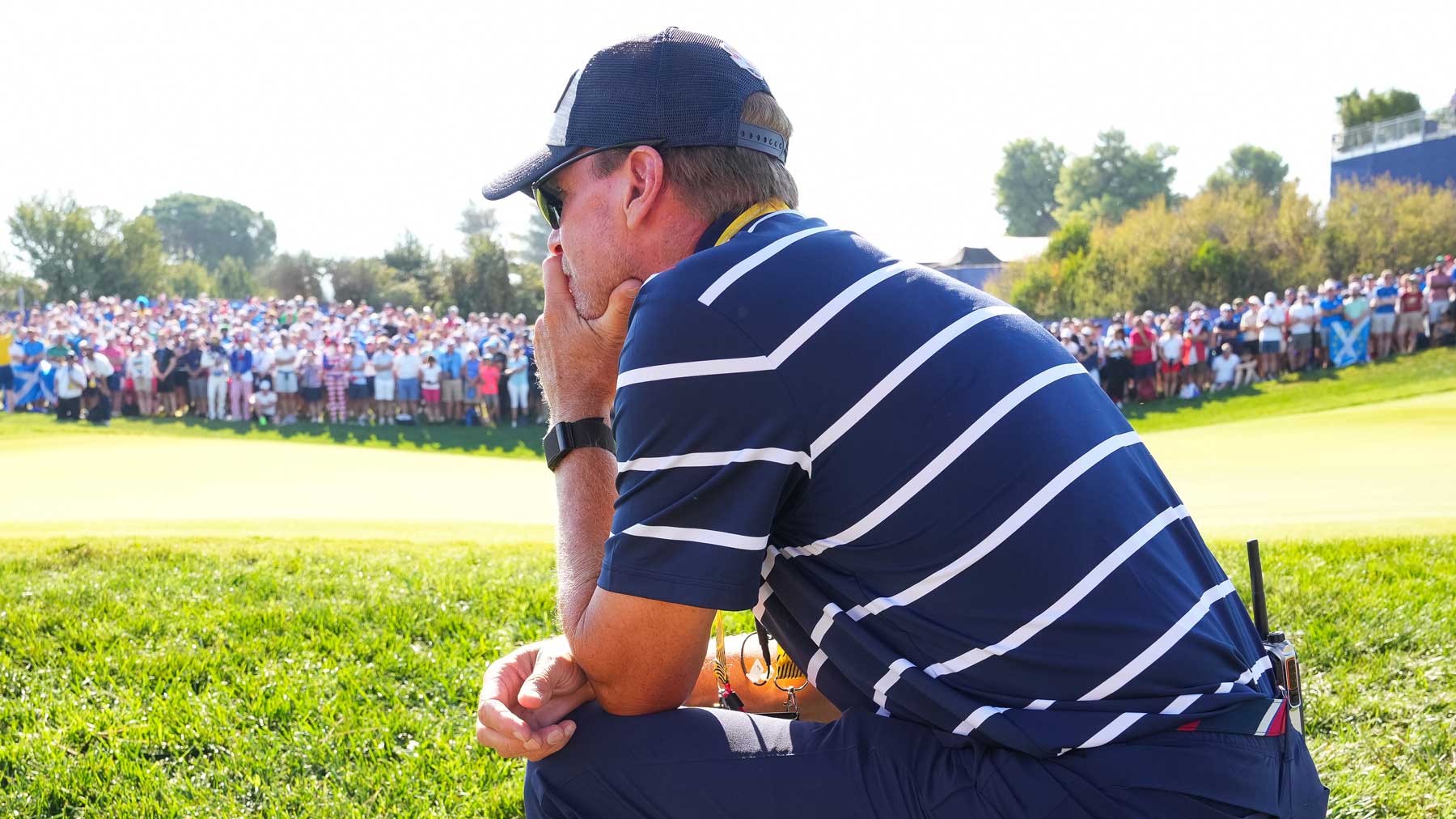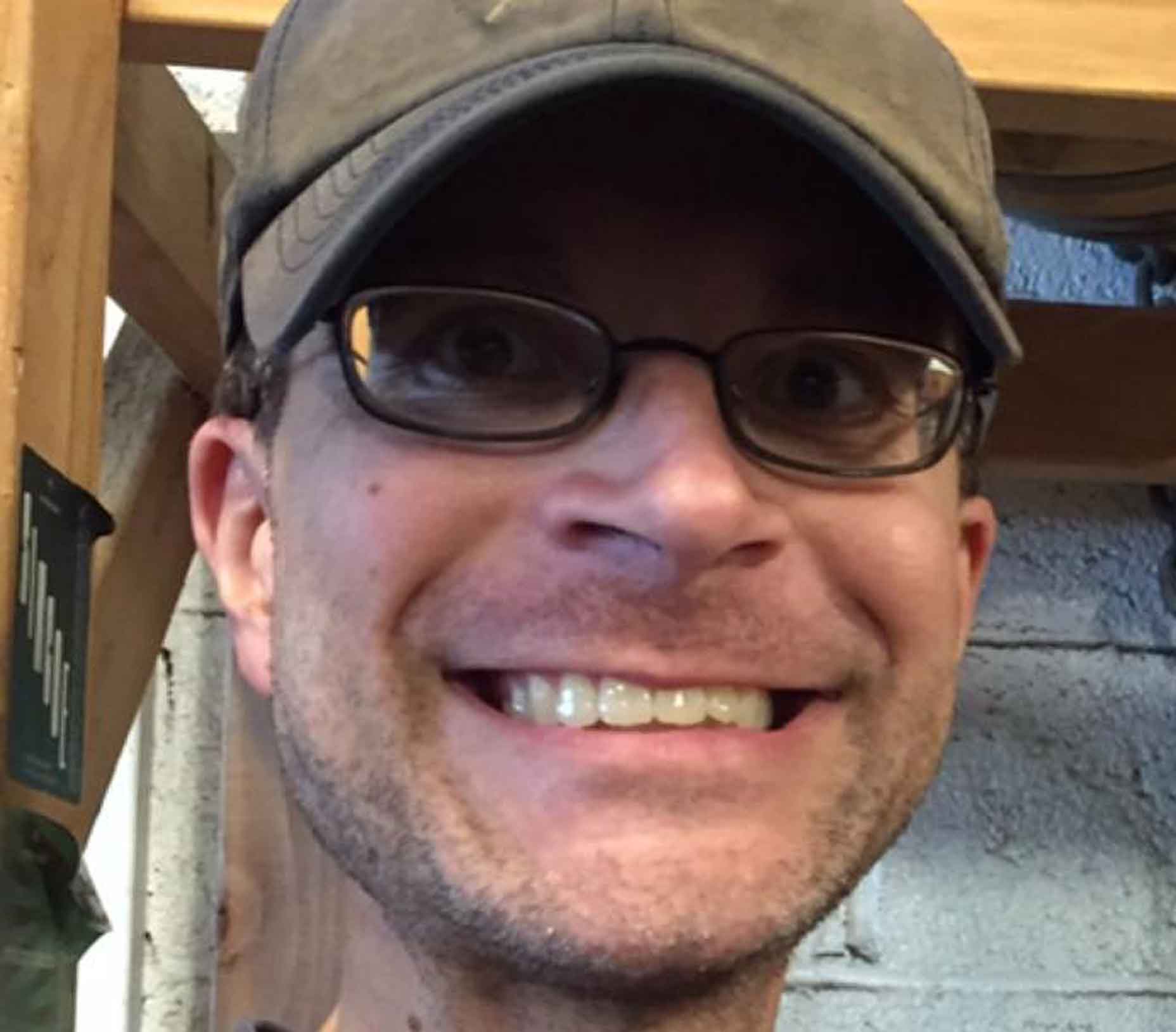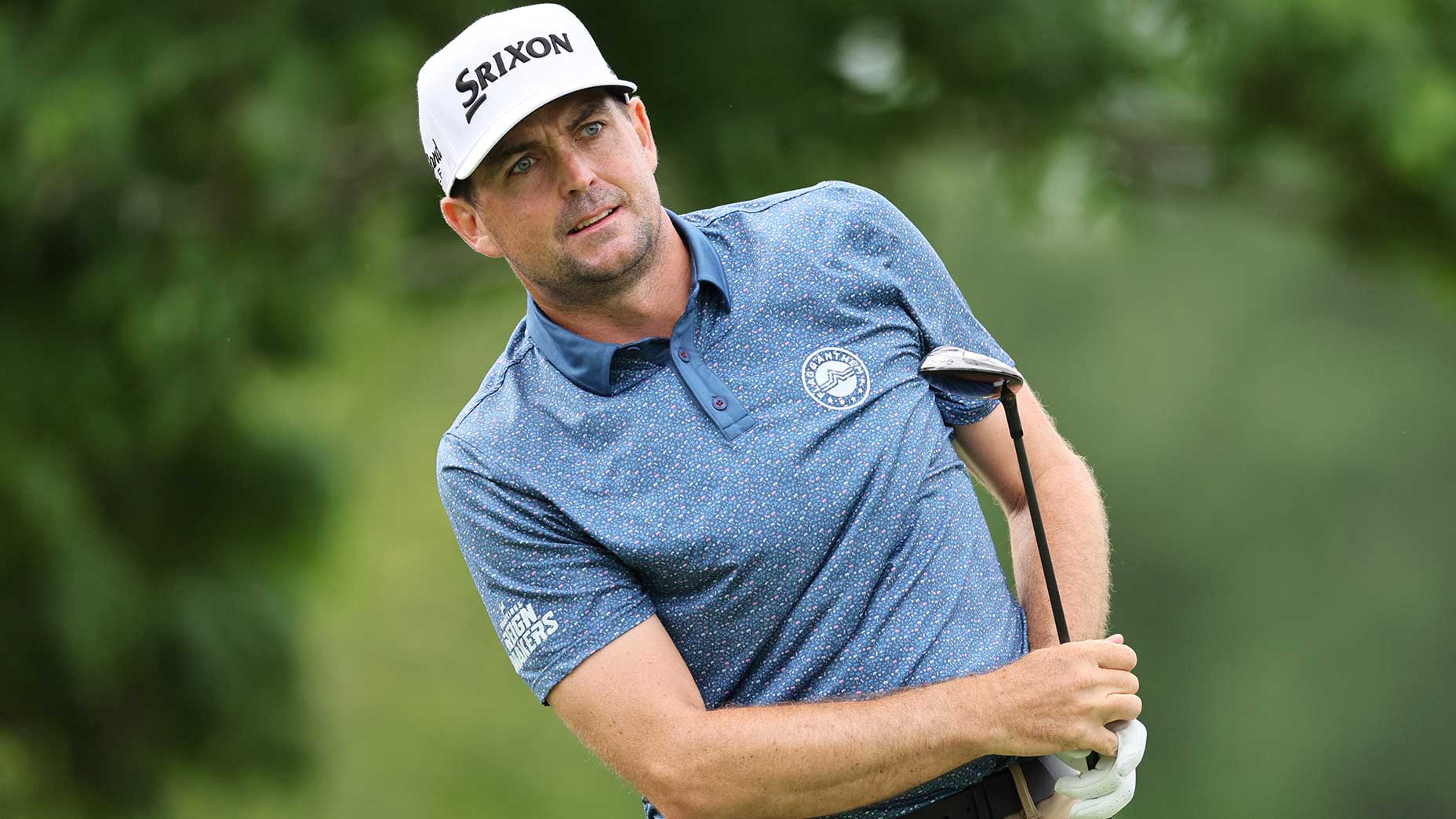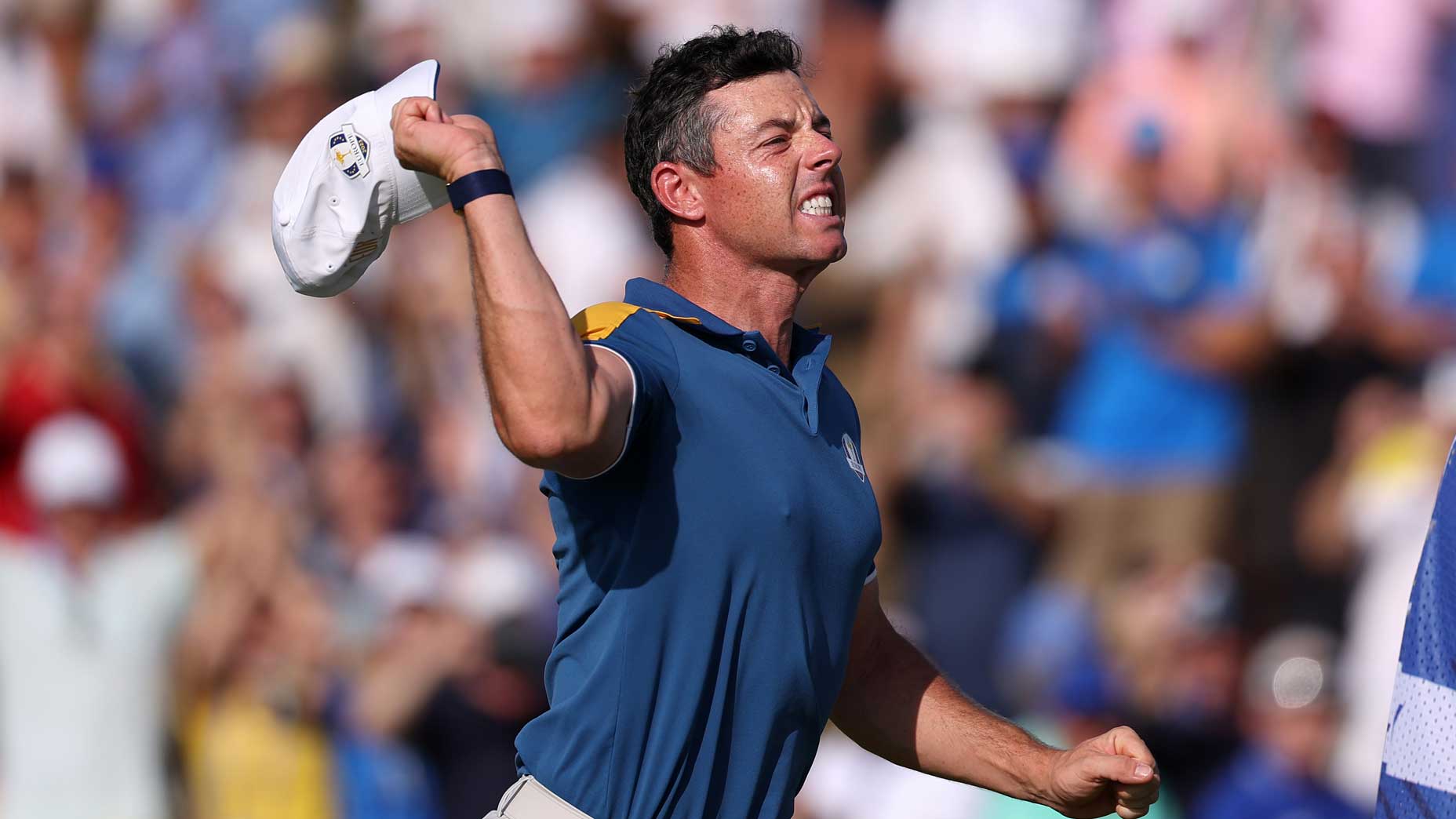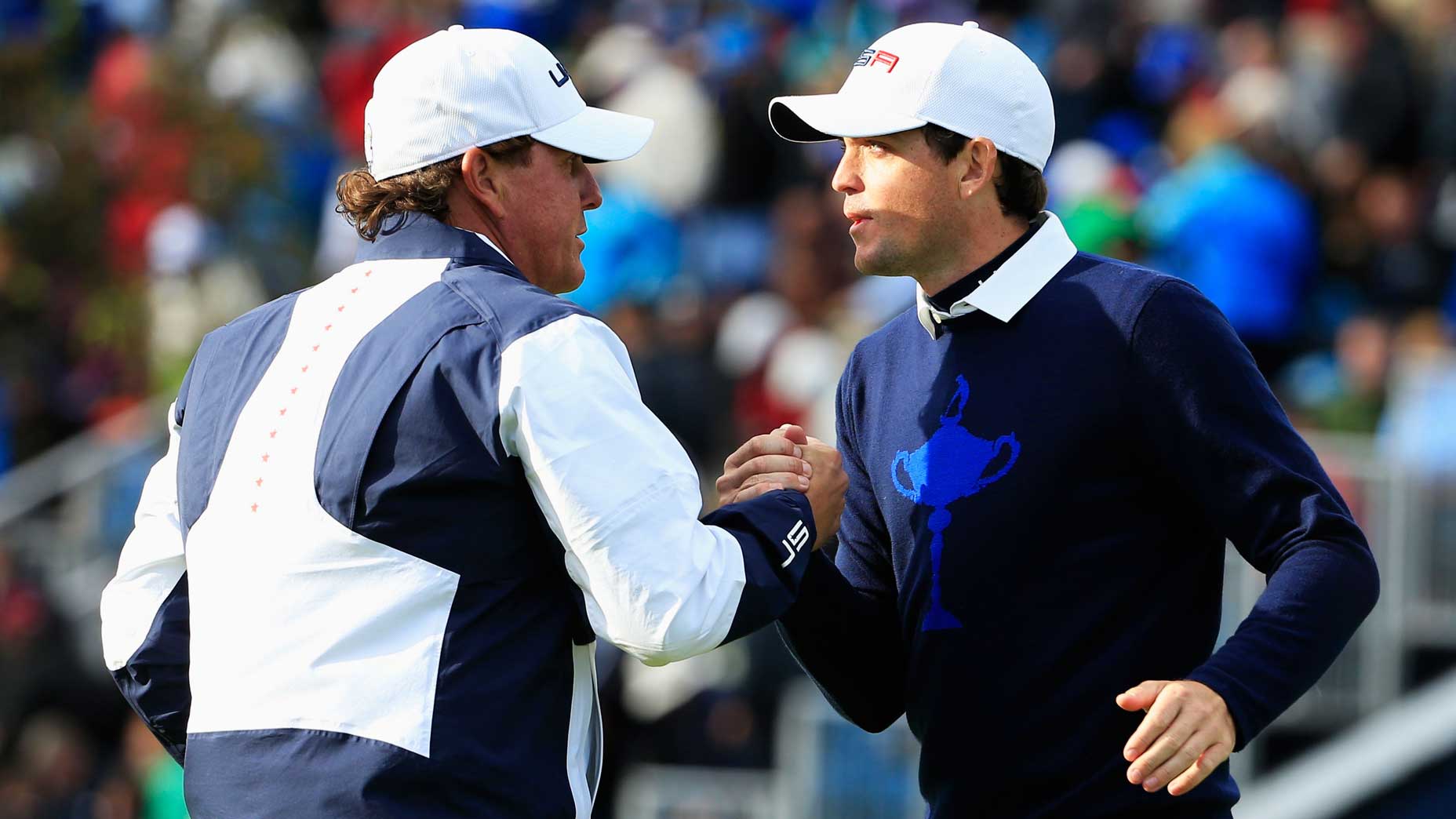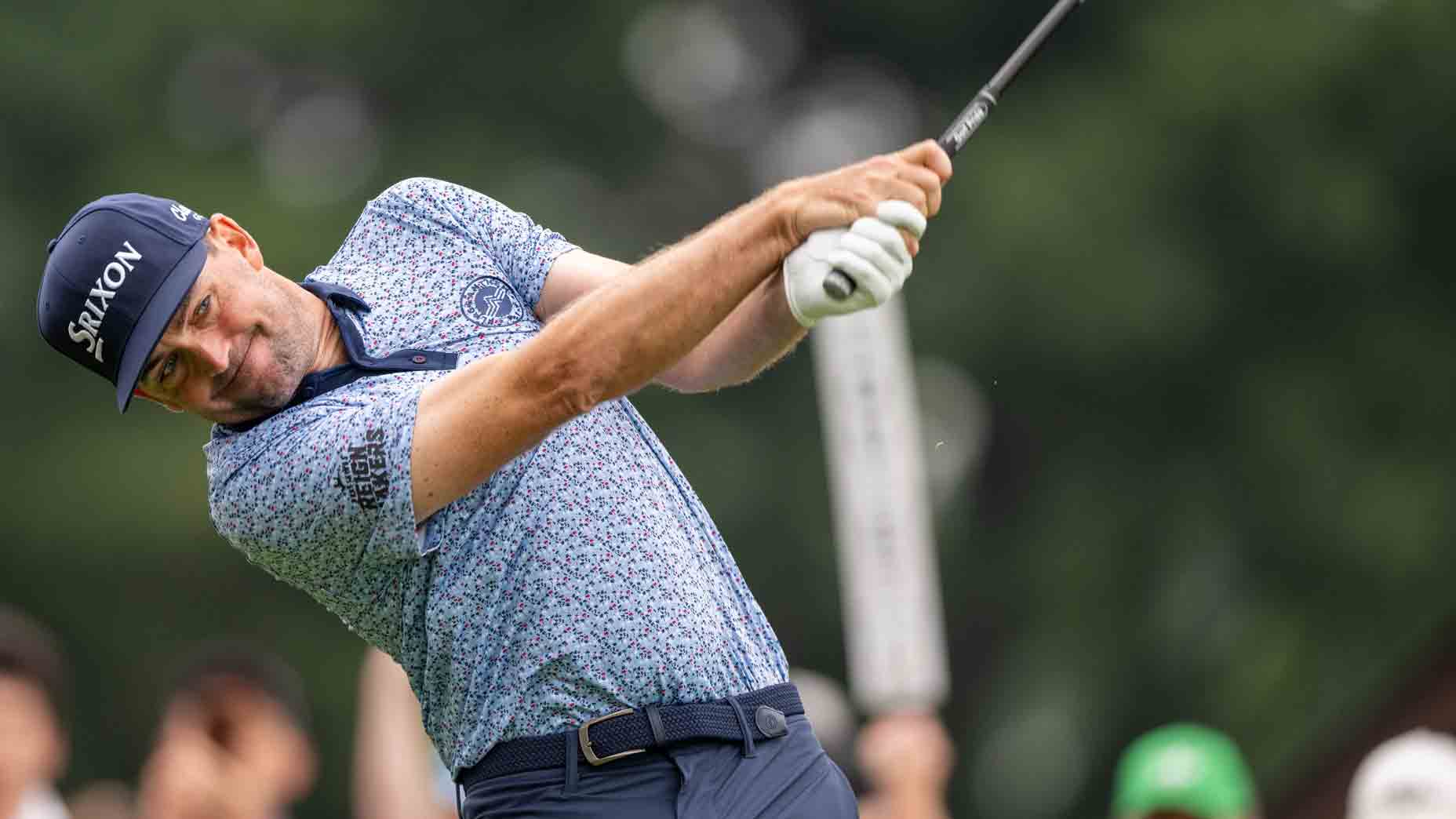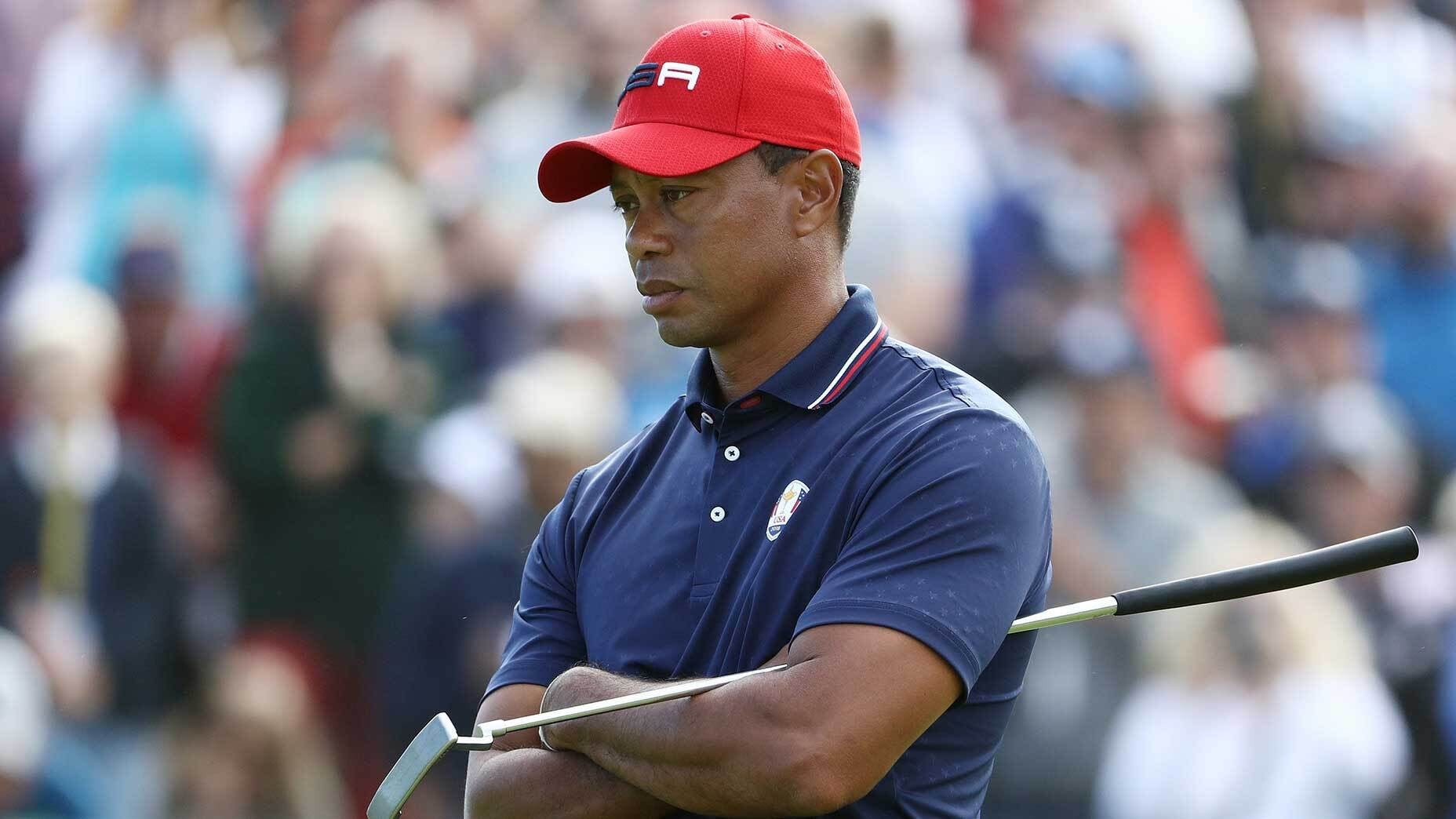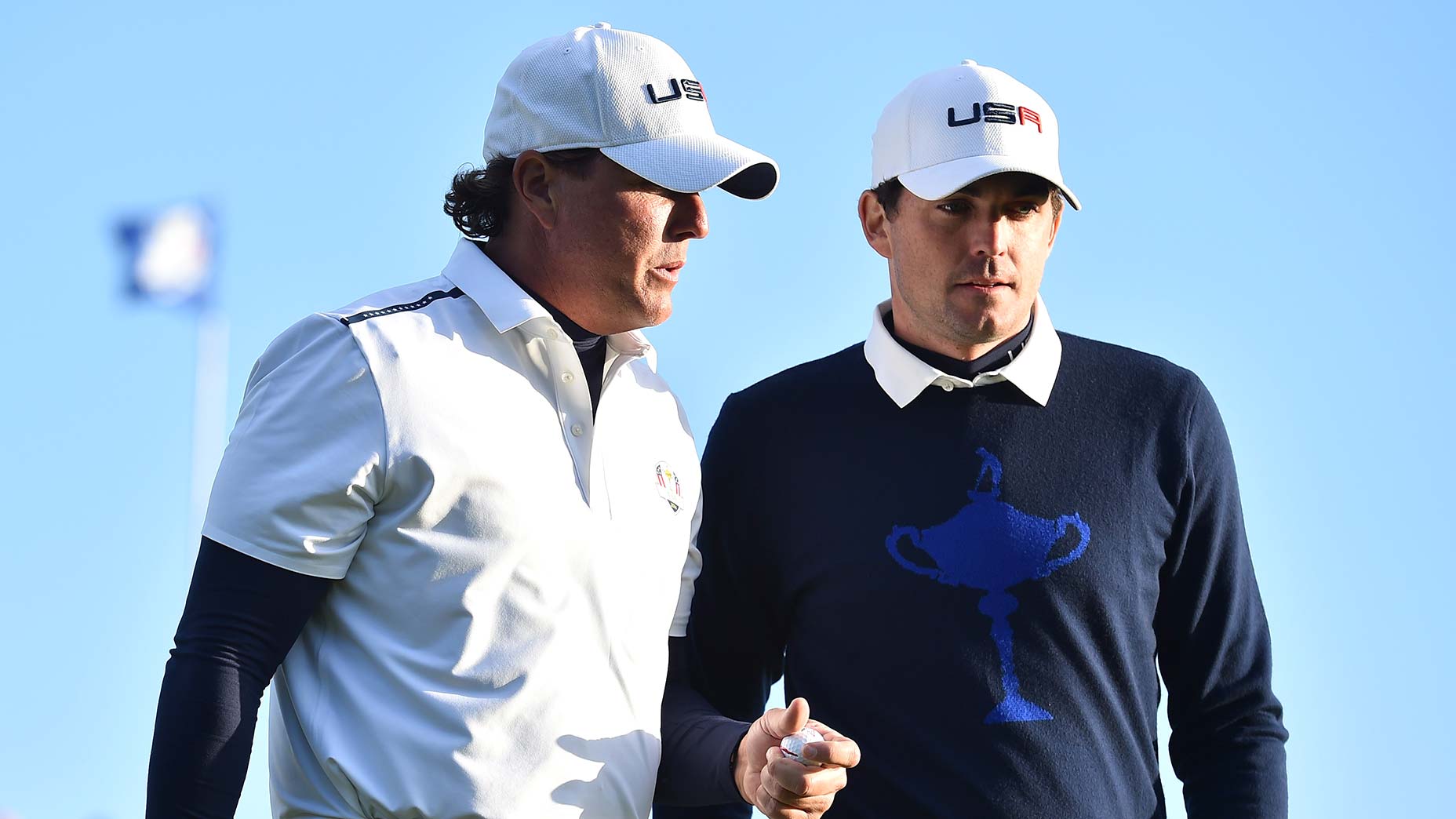Tee box moves? Clever notes? How Europe dominated Ryder Cup, according to insider
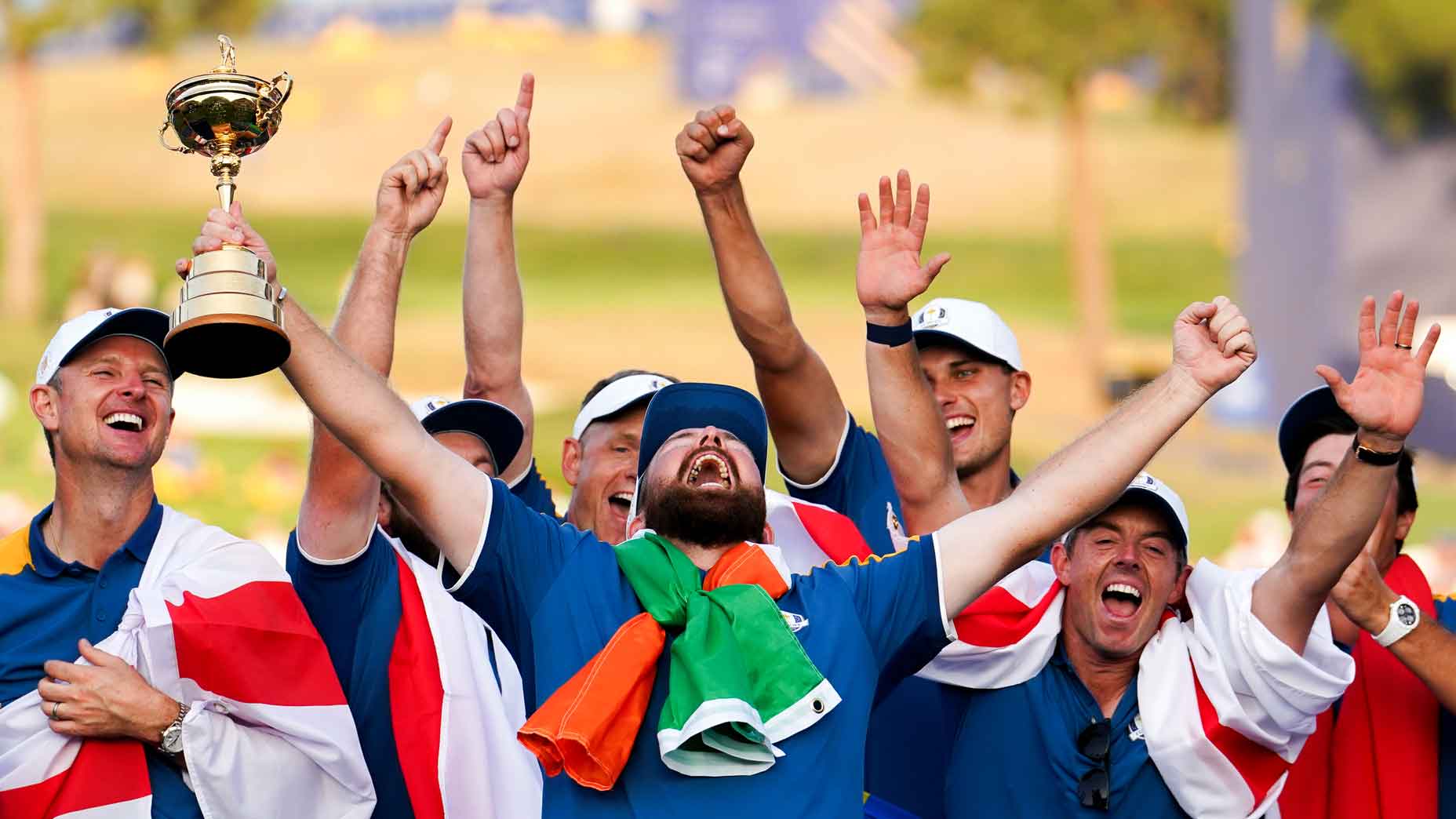
Shane Lowry and the European Ryder Cup team on Sunday after their win over the U.S.
Getty Images
Paul McGinley pauses. He is offering deeeeep insight into why the European Ryder Cup team doesn’t just win at home, it annihilates its American counterpart. But he wants to make something clear:
Those thumpings come mostly on one side of the Atlantic.
“I think it’s fair to say from both sides, certainly from a European side, we have not nailed a template away from home,” McGinley said this week on the Five Clubs podcast. “We have a lot of work to do. As much as we’ve nailed a home template, we have a lot of work to do in saying, OK, that was that; that home template does not necessarily work away from home. We got a different set of criteria we have to put in place, and there’s different dynamics in play and we’re going to have to dream it up for what is an away template.
“So that is a challenge.”
And he’s right: The Europeans haven’t won in the U.S. since 2012. Of course, the former Ryder Cup player and captain also says this because that home template is damn near a masterpiece. If you’re a fan, of either the Euros or the Americans, you know its output well. No wins by the Americans in Europe since 1993. Seven-straight victories by the Europeans. The latest came Sunday, 16.5-11.5, at Marco Simone in Italy.
It’s impressive. But maybe the process to get there is more so. The system is more than just getting hot once every four years. It’s smart. It’s thoughtful. It’s calculated.
It won the Ryder Cup last week.
Below are four parts of it. During the Five Clubs podcast — which you can and should listen to in full here — McGinley went into intimate detail on all of them with host Gary Williams.
‘Our players know the golf course’
As noted above, the Ryder Cup was played this year at Marco Simone. Five years ago, it was held at Le Golf National in France.
And both are hosts of DP World Tour events — the French Open has been held at Le Golf National consecutively since 2002, while Marco Simone has hosted the Italian Open since 2021.
The familiarity is a benefit, McGinley said on the podcast.
“I think a big advantage is we know the golf course, our players know the golf course,” he said. “You know, that French Open, I’ve been playing there since 1992 on that French Open golf course. Every one of the players in France had had a top 10 finish or better in the French Open over those years. I think six or seven of our players had played the last couple of Italian Opens around there. So we were used to it. We were ready for the golf course, the golf course was to our advantage, and it was tailored that way by the use of statistics.”
As for the American side?
Two years ago, the Ryder Cup was played at Whistling Straits, and two years from now, it will be played at Bethpage Black. The last events at each were major championships — Whistling Straits hosted the 2015 PGA Championship, while Bethpage hosted the 2019 PGA.
‘We were a better team statistically than America collectively at around the 200- to 240-yard mark’
Both sides tailor their courses. In 2018, for example, as Golf Digest’s Luke Kerr-Dineen excellently described here, the Europeans pushed gallery ropes on the fairways farther to the left and right — so the long-hitting but inaccurate Americans would not have the luxury of trampled-down rough, should they go astray off the tee.
But according to McGinley on the podcast, the adjustment this year featured tee boxes.
“One of the things that was very clear — I said it on TV and I don’t want to give too much away — but we were a better team statistically than America collectively at around the 200- to 240-yard mark,” he said. “America was very good with wedges in their hands; anything from kind of 100 yards to 135, America was much better than us.
“So setting up the golf course, it’s not about just tailoring rough — everyone thinks it’s about pinching in the fairways and that kind of thing; it’s not. What we did is we took three par-4s and we made them drivable par-4s. Three par-4s that were drives and wedges, which would have been a strength for America, and we actually moved the tee boxes up and we made them 300 yards or 330 yards and obviously that’s where our strength was going to be.
“So that’s when I talk about tailoring the golf course, there were clever ways just to put the odds a little bit in our favor, without losing the integrity of the golf course.”
The holes were likely the par-4 5th, the par-4 11th, the par-4 16th and potentially the par-4 6th. During the singles matches on Sunday, the yardages of those holes were 276 yards, 301 yards, 277 yards and 348 yards — whereas during the Italian Open in May, the yardages of those holes were 376 yards, 329 yards, 303 yards and 381 yards.
‘The best way of getting the answers to stuff is to distill it down to something smaller’
The Europeans, we had heard at points during the week, were greeted by emotional messages. Rory McIlroy, for example, admitted he broke down.
All of it was planned, McGinley said on the podcast. His explanation here is lengthy, but good.
“That’s all kind of a part of our template,” he said. “Some things that are very, very complex — whatever it may be, in business or whatever — the best way of getting the answers to stuff is to distill it down to something smaller. And I had a view very clearly and it comes from my background in Ireland. In Ireland, we got 32 counties, like you have states in America, and they’re very, very small; we’ve only got, between north and south, we’ve got six million people total in population. And Gaelic football in Ireland is a big, big deal. And it’s an amateur sport. You get 80,000 people at the games, from quarterfinals onward, and 30-, 40,000 at the other games. But the big thing is, you can only play for the county you’re born in. So there’s no transfers, and if you happen to be Tom Brady and you happen to be born in a county that’s not very good, well, unfortunately, that’s tough luck — you’re never going to be the Tom Brady of Gaelic football.
“So I took that idea and what I did was I wanted to put that in a European context. We’re here not just representing a blue flag. I wanted to distill it down because everybody, one thing that we’re all united in, we’re very, very proud of where we come from. We’re very, very proud of our roots. And when you touch somebody’s heart, a good way to do it is through where they’re from. Most of us have got great experiences of growing up — the little town or village that we’re from, the aunties, the uncles that are still living there, the friends you went to school with, the girlfriends we used to have, all of those things that happened and bloomed out of that little town or village you’re from. I wanted to bring the players back to that place in their minds.
“As much as we’re representing this blue flag of Europe, we’re also individuals and we all come from different places. So what I spent a lot of time on, whether it be tailoring the rooms or big communication with the players about representation, not of Europe as a whole, but on the town, the village, the people that you represent, that they would all be tuning in or watching around the pub in Ireland or watching at home, proud of you, and everytime they come on, they’re going to be watching you. … It’s something about igniting the heart.
“I’m really a believer when players and sports people are inspired and they’re playing from the heart, they go to a higher level than if they’re playing from their head or they’re told to do something. When it comes through their heart and they have an emotional investment in something or representation in something, magic happens. So that’s what I used and I think Luke [Donald] took it to another level, a better level, in terms of doing that this year. He made some personal videos of people that were important to each player and he sent it to them in a video and they all watched it privately in their rooms and I think that really ignited a lot of them. I heard Jon Rahm talking about a lot of tears when he watched that video because it was — as much you’re there, Jon Rahm, representing the blue flag and the DP World Tour and all that goes with it, we get that, but to really ignite these players, I really feel you got to do it through their heart and the best way to do it is from their loved ones, in particular.”
‘You kind of forget, oh, by the way, I was playing rubbish’
Then there are the players themselves.
On the podcast, McGinley said the Europeans have a culture. To best describe it, he talked of his 2002 Ryder Cup appearance.
This is again lengthy, but excellent.
“I think we’ve been blessed with great people carrying on the mantle and establishing a culture within the team, a code of behavior within the team. I’m not talking about captains here; I’m talking about players,” he said. “So you look at the hand-off. The top players are so important in a Ryder Cup team, not just in terms of the haul of points that you need from top players. They set the culture of the team. Because when I came into my first Ryder Cup environment, in 2002, I wasn’t coming in on a lot of form because 9/11 happened the year before; I’d gone from sixth on the money list to 35th on the money list; I wasn’t having a great year. I was worried going into this Ryder Cup, like how am I going to get through this huge event not on my game and slipping 30 places down the Order of Merit? … And when I walked into that team environment, I walked into a culture. I walked into a culture and a code of behavior. And an excitement. And a sense of fun, a sense of adventure that oozed out of the top players.
“I’m talking about Sergio [Garcia], I’m talking about Lee Westwood, I’m talking about [Jose Maria] Olazabal, I’m talking about Bernhard Langer, I’m talking about Ian Woosnam. Those were the top players on that team in 2002 — Colin Montgomerie. And you sat in the first meeting and you looked around, and they were so excited and they had not an aggressive determination, but a sense of adventure and relishing of the challenge that was ahead. And it takes my mood as a rookie going in a little bit worried, to raises it up. And then you get on the golf course. And the banter starts. You get a bit of fun. You kind of lose yourself. You kind of forget, oh, by the way, I was playing rubbish the last few weeks. Now my game is in really good shape. And your mood changes.
“So that’s just one example. Then that moves. You look at what happened here this time. So those people — Bernhard Langer, Ian Woosnam — move away and then other players come, the Westwoods and the Garcias come to the front, and the Darren Clarkes come to the front. Now they’re starting to carry on that legacy and that culture, and culture is a code of behavior and it’s an environment within the team. And then you move on.
“The Rory McIlroys, the Jon Rahms and the Viktor Hovlands have talked a lot this week that one of the advantages this week that they didn’t appreciate was the fact that because those LIV players were not there, those big characters that have carried the mantle, and because they weren’t there, it kind of forced them to step up and be those soldiers and be those people that were establishing the culture. And they seemed to relish it. It’s kind of handed down through the top players in particular. Because culture does not start from the bottom players up. It starts from the top players down. The captain has to oversee that and coordinate that and embellish it.
“I think that’s what we’re blessed with.”
Editor’s note: To listen to the entire podcast with McGinley, please click here.


